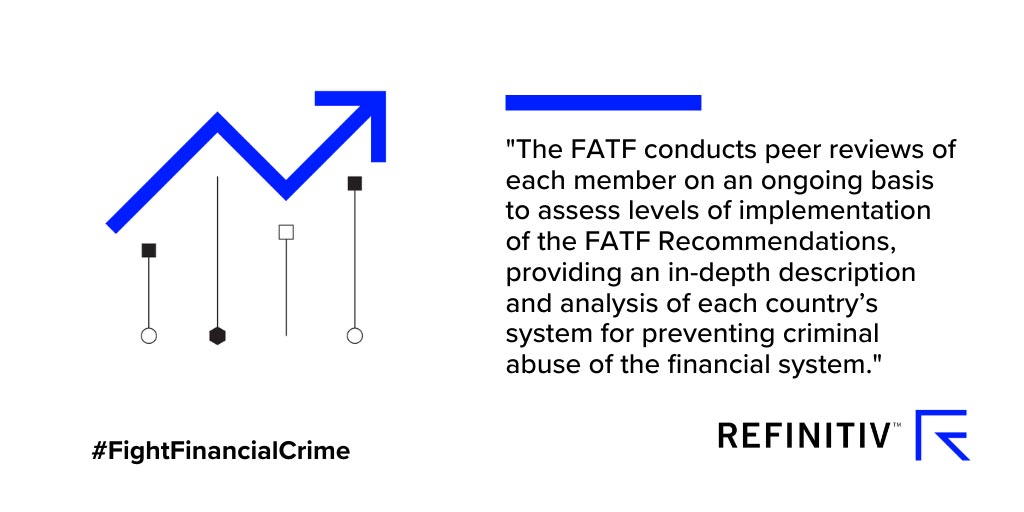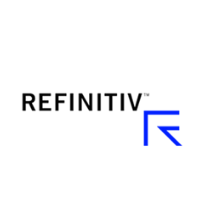How does the FATF help fight financial crime?
01-12-2020 | treasuryXL | Refinitiv |
-
The FATF is an intergovernmental body that oversees global efforts to combat money laundering and the financing of terrorism.
-
To become part of the FATF group, a country must undergo a ‘Mutual Peer Review’ to determine its levels of compliance with FATF’s Recommendations.
-
The FATF’s methodology change, introducing the Effectiveness Assessment, is yielding more accurate results of a jurisdiction’s levels of compliance with its AML/CFT global standard.
The FATF is an inter-governmental body that was established in 1989 by the G7 nations to combat money laundering. For the first 12 years, of its existence it was a little-known organization. However, it came to prominence after 9/11 when its mandate was expanded to include additional Recommendations to combat the financing of terrorism and the financing of the proliferation of weapons of mass destruction. Since then, the FATF mandate and Recommendations have been endorsed by different UN resolutions, and it has been transformed to adapt to different emerging threats. In 2008, after the global financial crisis, FATF’s role as an international standard policy-making body in AML and CFT was expanded by the G20. It was given the ‘soft power’ to generate the necessary political will to bring about legislative and regulatory reforms in countries.
The FATF Mutual Peer Review
Countries wishing to become members of the FATF group must commit to a ‘Mutual Peer Review’ system. This will determine the country’s levels of deployment and compliance with the FATF Recommendations, which have been set as the international AML/CFT standard. The FATF oversees these reviews in conjunction with different international members and observers such as the IMF, the World Bank, the OECD, and the European Commission. 
In addition to the information received from the assessment team performing the review, the FATF Mutual Evaluation’s Effectiveness Assessment also considers information from the FATF team that visits the country being evaluated. The Mutual Evaluation team comprises highly trained experts drawn from FATF member countries and international bodies.
Recommendations focus on effectiveness
Until 2013, the results of the FATF review were largely focused on the technical implementation of the Recommendations into the local legislations. However, because of the high levels of money laundering (ML) and financing of terrorism (FT) globally, the FATF decided to enhance its methodology to focus more on effectiveness rather than just technical compliance. This revised methodology helped to produce the expected tangible results in the fight against AML/CFT. It shed light on many countries that had previously been evaluated, but who under the new methodology began to show serious weaknesses in the fight against ML and FT. This resulted in the number of countries and jurisdictions on the FATF Grey List — those who were placed under increased monitoring — to start growing.
The FATF Mutual Evaluation employs peer pressure from other countries, as well as bodies such as the IMF and the World Bank, which impels the assessed countries to act. Negative mutual evaluation outcomes not only seriously damage the reputation of the assessed countries and embarrass its governments, but might also generate replicated systemic risks of coercion by other international institutions such as the European Commission. And the new methodology is working. In recent years, the Effectiveness Assessment is yielding more accurate results of a jurisdiction’s levels of compliance with FATF’s AML/CFT global standard. Many jurisdictions are now finally realizing the coercive power of the Mutual Assessment.
New evaluation methodology
The fourth round of Mutual Evaluations from FATF continued the shift towards concentrating on how effectively regulations are deployed rather than mainly focusing on technical compliance and whether country laws and regulations are in place in accordance with the FATF Recommendations.
This can be very challenging for a number of countries in many sectors, including some that have previously been assessed to be complying with the standards before the introduction of this new evaluation methodology.
The pressure to ensure that legislation was changed and that industry sectors complied with the Recommendations was achieved by targeting the industry sectors that posed the highest AML/CFT risk. At least this was the case in the Middle East and Africa. The early years concentrated on the banking and financial sectors, including the capital markets. This focus was later broadened to non-banking remittances and payments organizations and money exchanges. This was followed by the insurance sector and so on.
Non-financial sectors under the spotlight
The last few years has seen Mutual Evaluation reports focus on the designated non-financial business and professions (DNFBPs) sectors — real estate, lawyers, accountants, gold and precious stone dealers, for example — that had been previously overlooked area by past evaluations. For example, the EU Fifth Anti-Money Laundering Directive, which came into effect in January 2020, further strengthened its AML/CFT legislation to fall in line with the FATF, when it included a number of new sectors.
The non-financial sector often has the misconception that AML/CFT regulations are solely for the banking and financial sectors. A key shortcoming identified by FATF across many jurisdictions in emerging markets is that DNFBPs are falling short of FATF expectations. Recent evaluation reports from several countries show that DNFBPs have less comprehensive, and sometimes limited or no understanding, of AML/CFT regulations and the risks that they are facing.
However, the new approach of measuring effectiveness rather than technical compliance might keep many countries’ institutions and companies to consider: “Are our sanctions and transactions screening just a checklist process, or do they show the real effectiveness of our AML/CFT risk process as defined by FATF?”




 My last blog was about IBM, triggered by a Juniper Research putting the company as the number one in the blockchain technology competition. One of the comments on this blog was that it looked like an IBM press release. But that is far beyond what is meant. I just looked at what the tech company was doing in the blockchain arena and why it could be adopted as the main blockchain model when blockchain adoption could become mainstream. In a previous blog I already talked about Microsoft’s CoCo platform, the number two in the Juniper Research asking myself if that could become a game changer (see my Blog: Microsoft CoCo Framework: blockchain game changer, August 29, 2017). Today I will go into some more detail in the blockchain activities of Accenture, number three according to the Juniper survey.
My last blog was about IBM, triggered by a Juniper Research putting the company as the number one in the blockchain technology competition. One of the comments on this blog was that it looked like an IBM press release. But that is far beyond what is meant. I just looked at what the tech company was doing in the blockchain arena and why it could be adopted as the main blockchain model when blockchain adoption could become mainstream. In a previous blog I already talked about Microsoft’s CoCo platform, the number two in the Juniper Research asking myself if that could become a game changer (see my Blog: Microsoft CoCo Framework: blockchain game changer, August 29, 2017). Today I will go into some more detail in the blockchain activities of Accenture, number three according to the Juniper survey.
 ‘The term ‘Cloud’ has become the buzzword for organisations interested in simplifying and transforming technology over the past several years. ‘The Cloud’ is used to describe a process or system of sharing technological resources to gain scale, efficiencies and reduce cost – or more simply put, using a network of computers to manage and process information, rather than a single computer or machine.’ According to
‘The term ‘Cloud’ has become the buzzword for organisations interested in simplifying and transforming technology over the past several years. ‘The Cloud’ is used to describe a process or system of sharing technological resources to gain scale, efficiencies and reduce cost – or more simply put, using a network of computers to manage and process information, rather than a single computer or machine.’ According to  Kasja Reinders – Treasury/Cash Manager
Kasja Reinders – Treasury/Cash Manager
